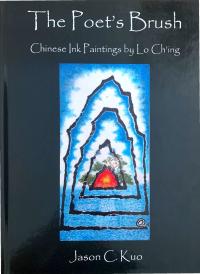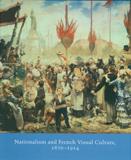Prof. Abby McEwen awarded Inaugural Do Good Campus Fund Grant
The $25,000 grant will focus on providing students opportunities to "understand the process of commissioning and installing public art."


Research in art history and archaeology is an interdisciplinary enterprise.
Engaging diverse theoretical frameworks and research methods, our faculty produce innovative scholarship in the form of books and articles, digital projects, museum exhibitions, public lectures and more. Our faculty lead national networks and conferences (including the Archaeological Institute of America and the College Art Association), providing innovative research frameworks and making significant contributions to UMD's research enterprise.
Consolidated ARTH Statement of Commitment to Diversity, Equity and Inclusion
(Prepared by the DEI Task Force and Approved by GAHA May 2022)
We, the members of the Department of Art History and Archaeology at the University of Maryland, affirm that Black lives matter and condemn the ongoing violence of systemic racism, xenophobia, homophobia, transphobia, and other acts of injustice and harm impacting BIPOC and other marginalized people. We recognize and are willing to confront the roles of Art History and Archaeology in elevating and perpetuating Eurocentrism and its attendant systems of oppression including colonization, exploitation of labor, exploitation of the nonhuman world, sexism, classism, and white supremacy inside and outside academia. We recognize that this list is not all-inclusive and is ever evolving, and to it more will be added. Continuing the work begun by graduate students, faculty, and staff in the summer of 2020 following the murder of George Floyd by police, we commit to building and maintaining a more inclusive, equitable, anti-racist and pluralistic department. As part of this commitment, we recognize the need to confront and redress bias and harm and to challenge monocultural norms and expectations.
In this process, we are inspired by and join the campus-wide efforts to reckon with the University of Maryland’s long record of discrimination, racial injustice, and actions that undermine the very principles of intellectual and moral integrity for which we stand.
We are committed to lifting up and expanding the diversity of our department community and to improving inclusivity and equity in our departmental practices, policies, and culture. In the study and practice of art history and archaeology, diversity and differences are assets. Our department affirms that diversity is expressed in myriad forms, including race, ethnicity, sex, gender, sexual orientation, class, immigration status, body type, language, culture, national origin, religion, age, ability, and political perspective. We are made stronger by inviting in and providing for the diverse voices, approaches and contributions that form the foundation of our twinned disciplines, and which enable our community, as a whole, to thrive. While our disciplines have collaborated in structures of oppression, we wish to affirm the role that we in the humanities and in art history and archaeology can play in helping to envision and make possible a world that is both sustainable and just.
We envision our department as a space of care, safety, and respect for all of our members. All of our voices are valuable and our actions matter. We commit to upholding this vision in our work together.

Read More about The Poet's Brush: Chinese Ink Paintings by Lo Ch'ing

Read More about Concrete Cuba: Cuban Geometric Abstraction from the 1950s
This essay explores Vermeer’s painting known as A Woman with a Lute as a visual poem on amorous and artistic longing. A closer look at its key elements—from the musical instrument being tuned by the lady to the map on the wall behind her—shows that this seemingly unmediated view into a private world is as engaged with ideas as Vermeer’s more overtly allegorical compositions. Most notable among these ideas are the relationship between the microcosm and the macrocosm, the notion that every record of the present is a form of “history,” and that the art of painting is no less eloquent in its silence than its sister arts of music or poetry. Ultimately, as in many other images of solitary females, the artist pulls us into a circle of desire, effectively turning us from beholders to coparticipants in a “composition” whereby the absent comes back into presence.
The essay analyzes how the Japanese government variously used its exhibition spaces at American world’s fairs in the 20th century to present an image of the country conducive to the economic and geopolitical goals embraced by the government and industry.
Read More about "From Soft Power to Hard Sell: Images of Japan at American Expositions, 1915-1965”

Read More about Nationalism and French Visual Culture, 1870-1914
Read More about Jean-Michel Basquiat's "Horn Players" (1983)
The Women in Archaeology Interest Group consists of AIA members with an interest in the position of women in the modern field of archaeology, and in promoting its understanding to members of the AIA through its various programs and publications.
Authored short, object-centered essays on the dissemination of statues of Queen Victoria across the British Empire and reproductions of Hiram Powers’ Greek Slave in a range of media.
Read More about Object-centered essays for exhibition catalogue

Read More about James Barry's Murals at the Royal Society of Arts: Envisioning a New Public Art